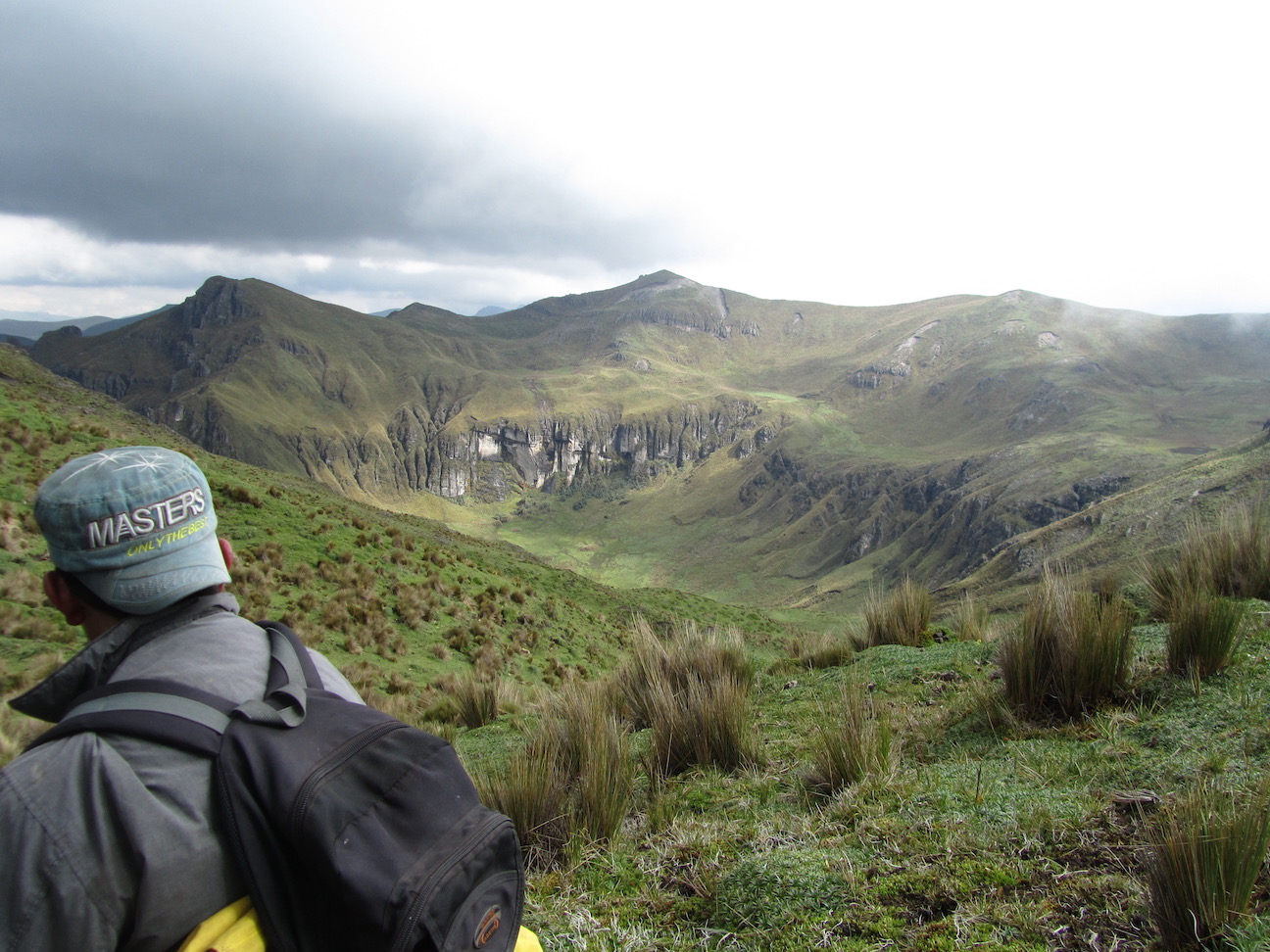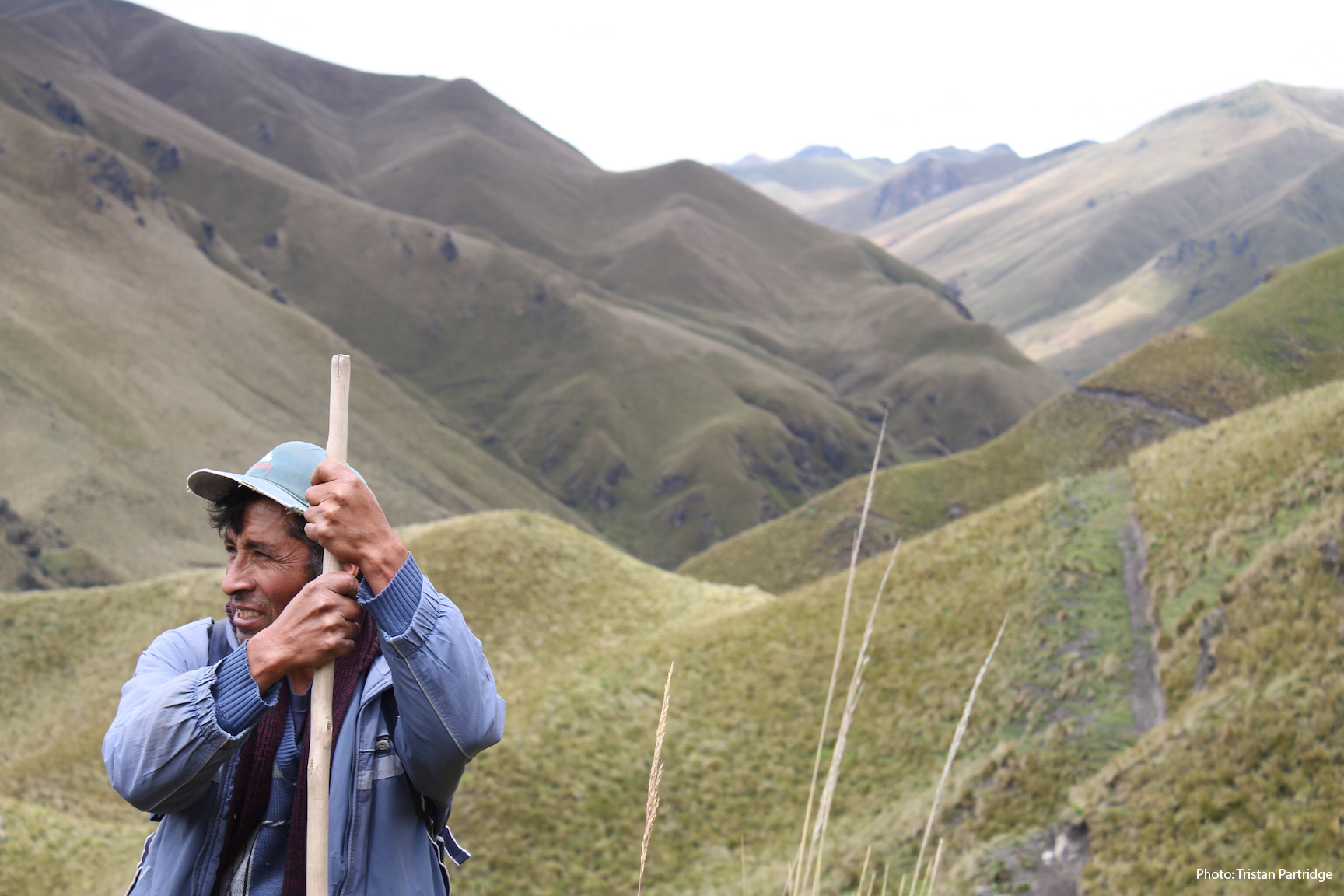High-altitude páramo moorlands comprise a wetland ecosystem that spans over 30,000 km2 of the northern Andes. Its unique soil structure and plant life play vital roles in the hydrological cycle, providing up to 85-90% of all drinking water in Colombia and Ecuador. The páramo functions by gathering rainfall and cloud moisture, which is then filtered through damp soils and slowly released into streams and rivers. Ultimately, it is a source of the greater Amazon watershed.
Efforts to protect the páramo overlap with Indigenous struggles for recognition and environmental justice.

 Don Jorge Llumiquinga at work maintaining an irrigation water pipeline that runs from the páramo to the Comunidad Ancestral de San Isidro in highland Ecuador.
Don Jorge Llumiquinga at work maintaining an irrigation water pipeline that runs from the páramo to the Comunidad Ancestral de San Isidro in highland Ecuador.
The wider world also benefits from a healthy páramo because its soils act as a carbon sink, helping to limit global heating. The páramo, like other lands in tropical alpine regions, stores carbon through a combination of its particular vegetation, low air temperature and atmospheric pressure, and soils that are frequently water-logged.
[Read more on the global importance of the páramo here; and read more about ongoing Indigenous struggles to protect and live peacefully with the páramo here...]